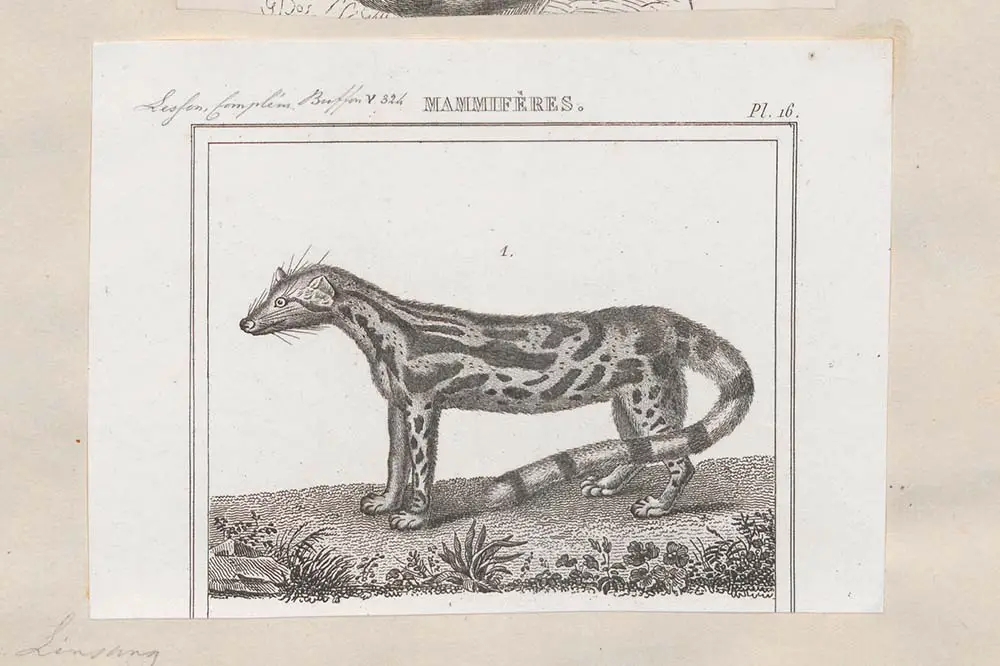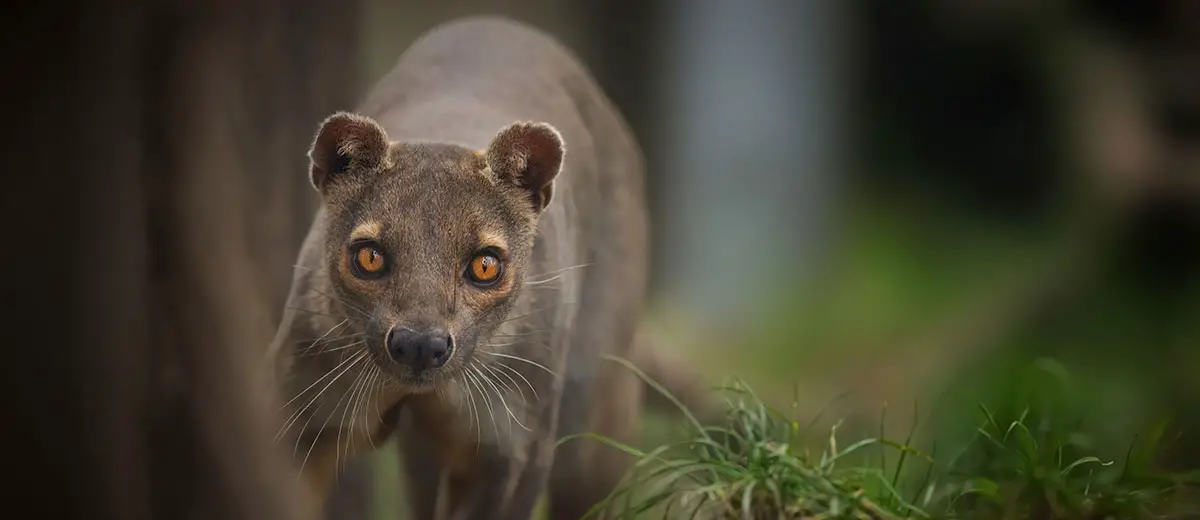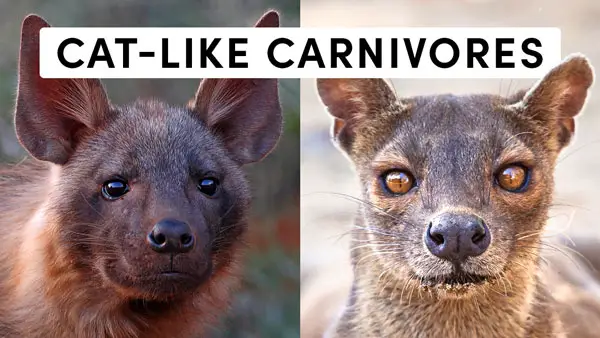The Closest Relatives to Cats
Lynxes, lions and cheetahs are the closest relatives to our furry companions, the domesticated cat. Outside of this family, there are roughly 90 additional species that makeup Feliformia, a suborder of “cat-like” carnivorans, which includes mongooses, civets and four species of hyena. In this guide, we’ll take a quick look at the 6 families most closely related to cats, their most interesting species and where they’re located, let’s dive in!
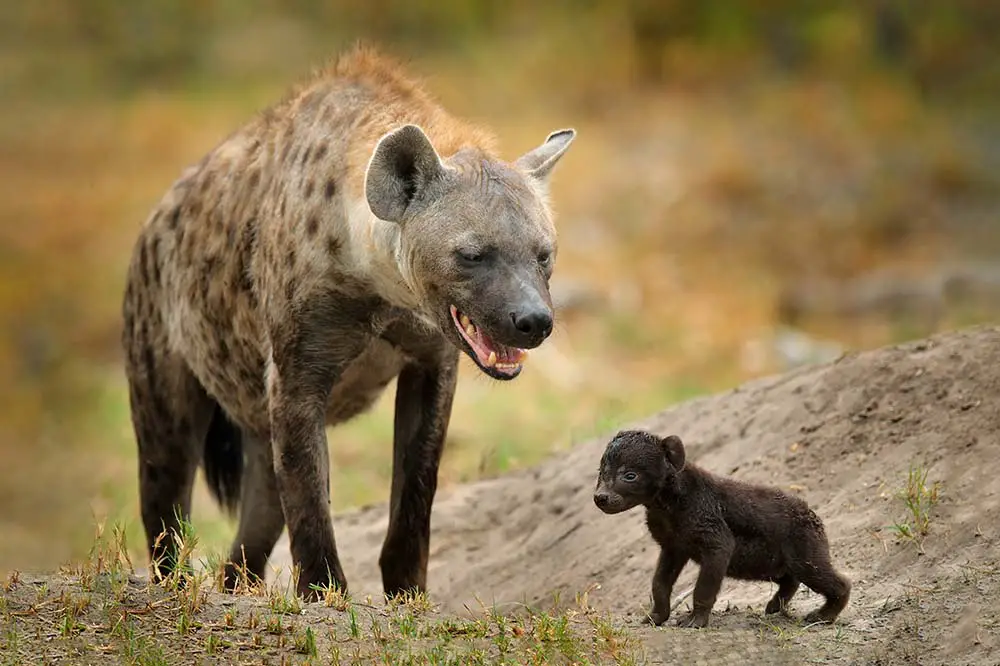
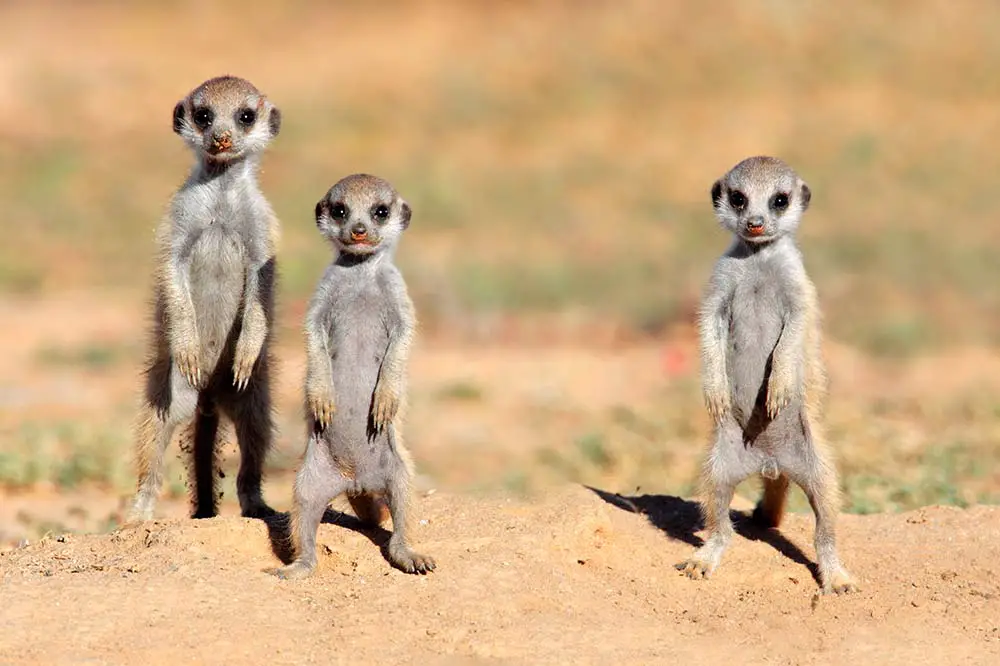
Left: Hyena with young pup | Ondrej Prosicky / Shutterstock & Cute meerkat babies in the Kalahari desert | EcoPrint / Shutterstock
Contents
- Eupleridae | Fossa & Malagasy Mongooses
- Herpestidae | Mongooses inc Meerkat
- Hyaenidae | Hyenas
- Viverridae | Civets & Genets
- Nandiniidae | African palm civet
- Prionodontidae | Asiatic linsangs
Eupleridae | Fossa & Malagasy Mongooses
Arguably, the most visually similar species to a cat is the fossa, which weighs roughly the same as an ocelot at between 7 to 12 kg (15.5 to 26.5 lb vs ocelot 8.5 to 16 kg / 18.5 to 35 lb). These cat-like creatures have large rounded ears and long vi-briss-ae, more commonly known as whiskers. Their tails are quite long, measuring the same length as their body at up to 80cm (31.5 in). Although these animals are part of Feliformia, their young are called pups; two to four pups are born after a gestation period of around 3 months and don’t reach full size until around 4 years old. They live in the forested areas of Madagascar where they are the largest species of carnivore preying on lemurs, other small mammals, birds, reptiles, amphibians and insects.
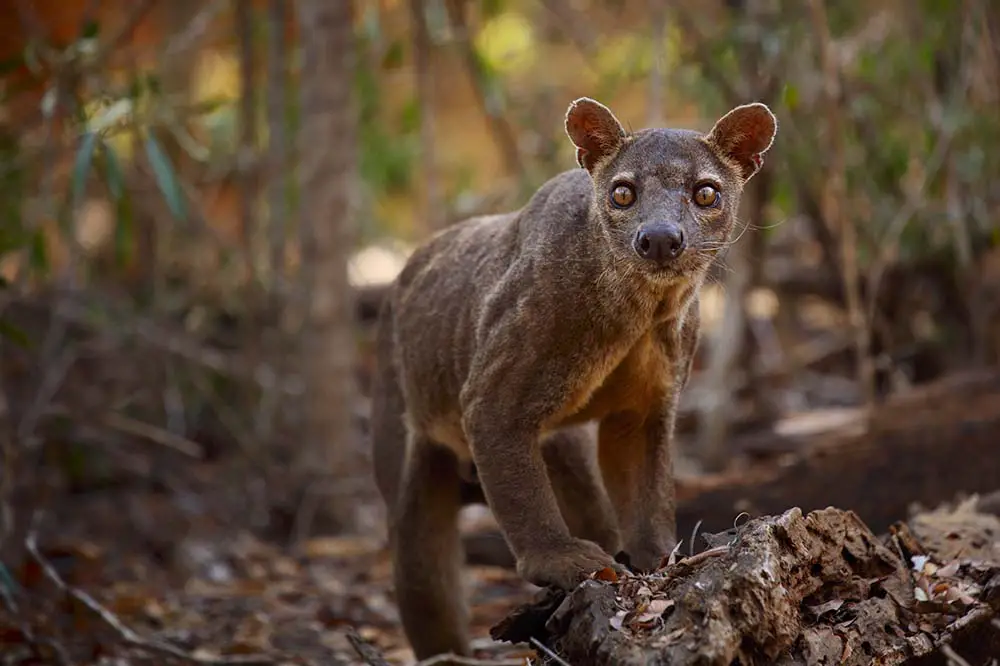
Part of the same subfamily, the Malagasy civet is one of the closest relatives to the Fossa. They are significantly smaller, weighing no more than 2 kg (4.4lb) and are quite unique exhibiting a thick bushy tail, which is thought to be used to store fat for the winter and can weigh up to 25% of their body weight.
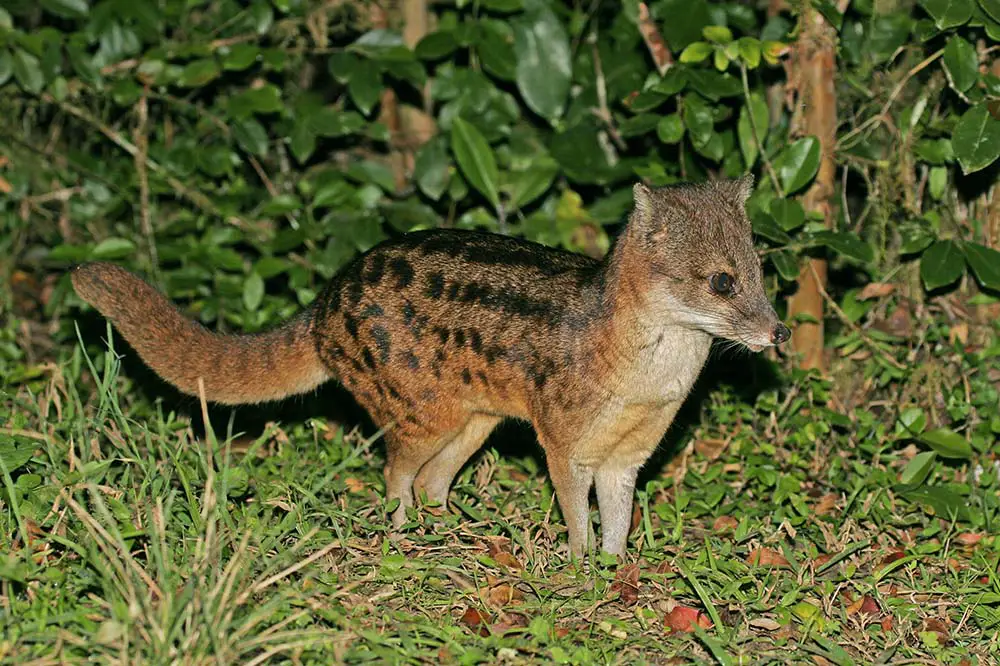
Both of these animals are contained within Euplerinae, one of two subfamilies within Eupleridae, whose members are known collectively as Malagasy mongooses or Malagasy carnivores. The other subfamily, Galidiinae, contains 6 species, including the narrow-striped mongoose, which is found in the dry deciduous forests of western Madagascar, the Grandidier’s mongoose, which has long dark stripes down its body and the Ring-tailed mongoose or ring-tailed vontsira. These animals have a rich red coat and striped tail and are quite similar in appearance to a weasel, so much so that their genus “Gali-dia” comes from the Greek word galē, meaning weasel. They have webbed feet and are known to be adept at both swimming and climbing and use these skills to hunt freshwater aquatic prey, many smaller terrestrial animals, birds and eggs.
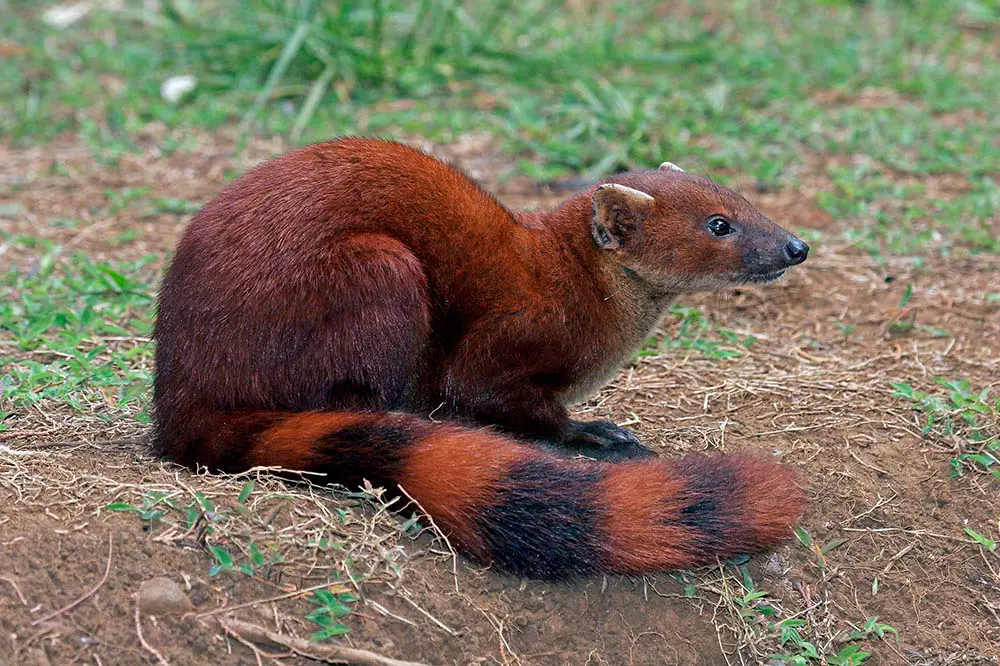
Herpestidae | Mongooses inc Meerkat
At 80cm (32 in) in length, the Indian grey mongoose is roughly the same size as a small domesticated cat but with their slender bodies, tends to weigh a little less. They are easily recognised by their grey and black-speckled fur in addition to their piercing eyes and often a red nose! With a short gestation period of 60-65 days, females can have two to three litters per year, usually containing 2-4 young. The Indian grey mongoose is found mostly in grassland, both tropical and temperate, as well as agricultural areas with their range extending throughout most of India, a large portion of Pakistan and as far west as the Arabian peninsula. They are part of the Urva genus which contains a total of 9 species commonly referred to as the Asian mongooses.
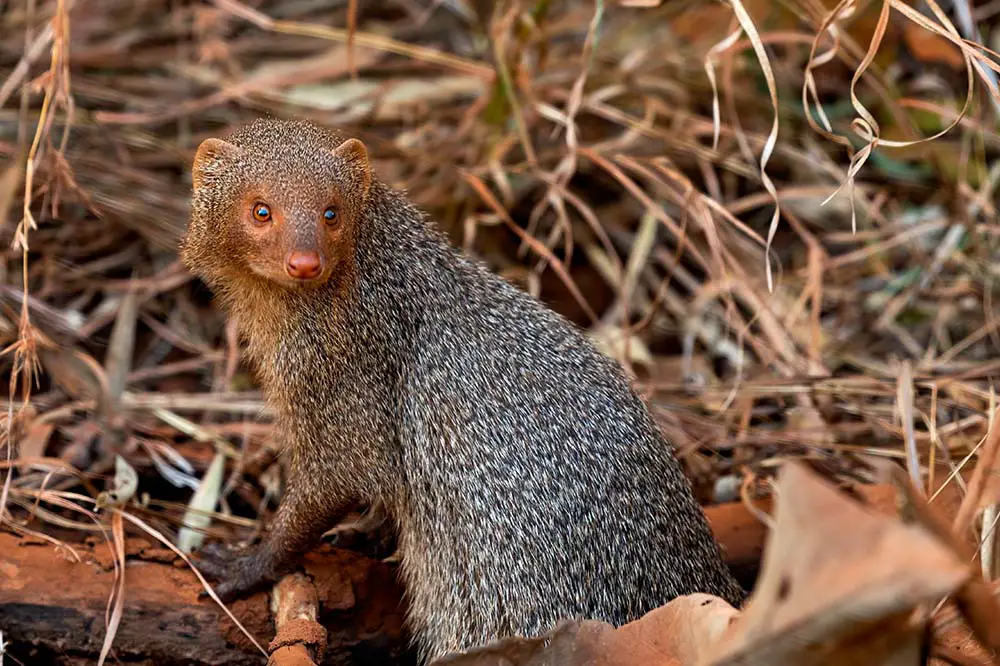
The Crab-eating mongoose is visually very similar but sports a much lighter tail and stripes that start just below the ear and extend onto their shoulders. They hunt on the banks of streams and other areas with water and prey not only on crabs but fish, birds and many other small animals such as frogs and insects.
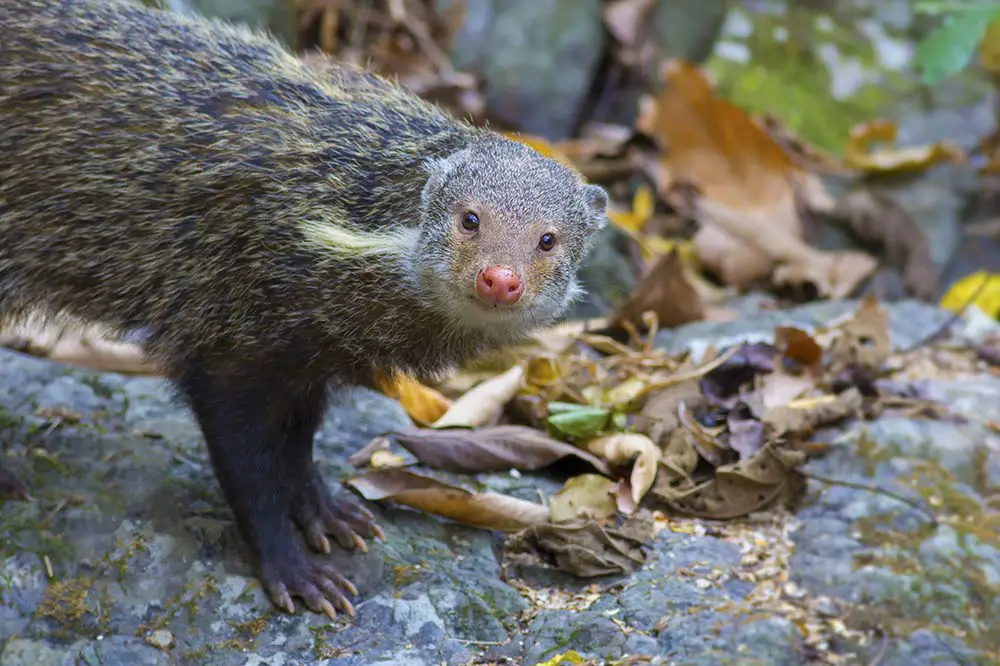
They have a large range, found throughout southern China and much of Southeast Asia. Found over 5,000 miles across the Indian ocean, lives the most well known of all mongooses, the meerkat, whose range extends across the southern tip of Africa. These cheery fellows are burrowing specialists who are famous for the upright posture they take outside of their burrows while looking out for predators. They are most commonly found in drier areas such as desert or tropical grassland, known in Africa as the savannah. They are quite small, weighing no more than 730g / 1.5 lb but what they lack in size they more than makeup for in number. Meerkats are highly social, living in large packs that are usually made of 3 familial groups, each containing a mating pair and their offspring. At 11 weeks, they have a slightly longer gestation period than the Indian grey mongoose but also give birth to around 3 young and can have up to 3 litters per year.
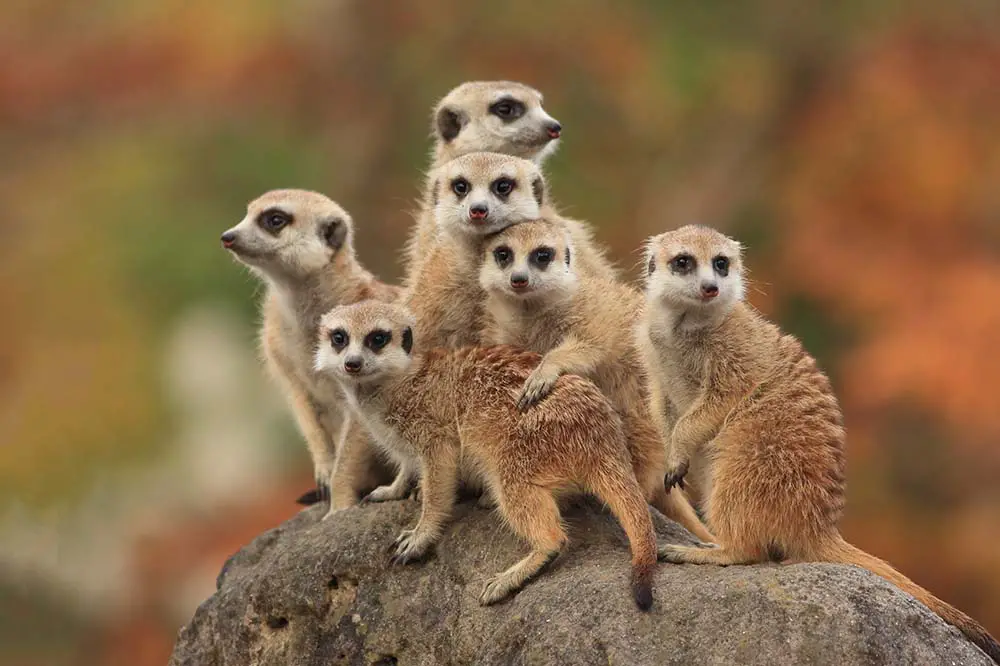
In total there are more than 35 species contained within Herpestidae including the yellow mongoose and the banded mongoose. All of these animals are closely related to the Malagasy mongooses previously discussed and this entire group is one divergence removed from a very different family, which contains just four species.
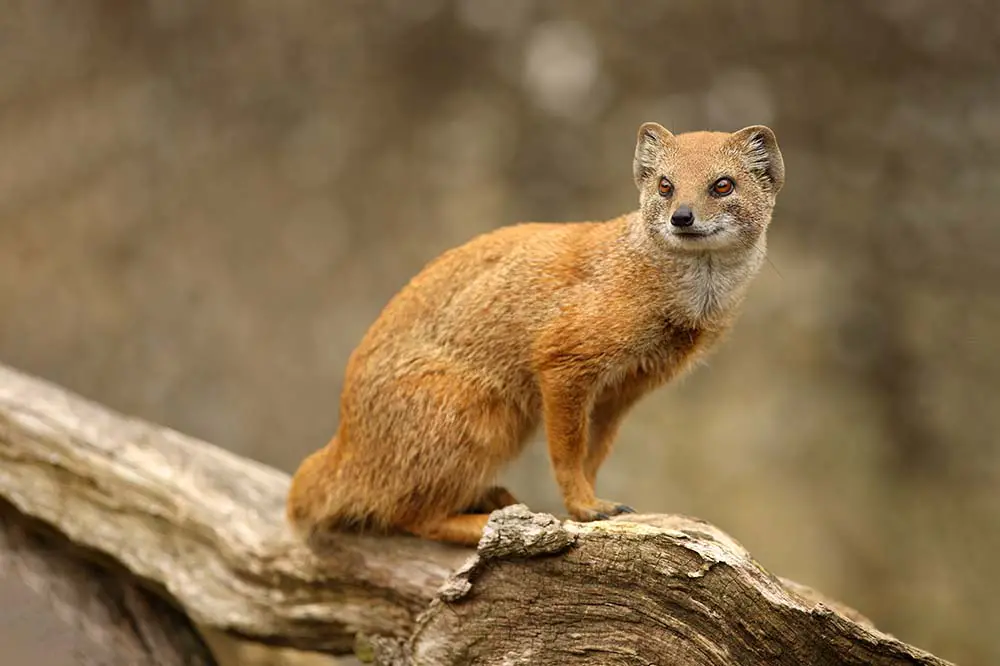
Hyaenidae | Hyenas
The spotted hyena is one the quintessential African animals. They are much larger than any animal previously discussed weighing between 45 to 80 kg (100 to 176 lbs) and exhibit sexual dimorphism. Females weigh roughly 6.5 kg (6.6 kg / 14.5 lb) more than males and are also known to be more aggressive. Groups of spotted hyenas are called clans, they are dominated by the females and are matrilinear, meaning that the hierarchy and lineage of the clan can be traced through its female members, with males leaving the clan after puberty. Gestation is usually around 4 months, after which females give birth to an average of 2 young who are almost entirely black. As cubs age, their black fur quickly disperses into the darker spots these animals are known for. While hyenas in general have a reputation for being scavengers, this is not the case for the spotted variety with direct kills making up to 70% of this species’ diet.
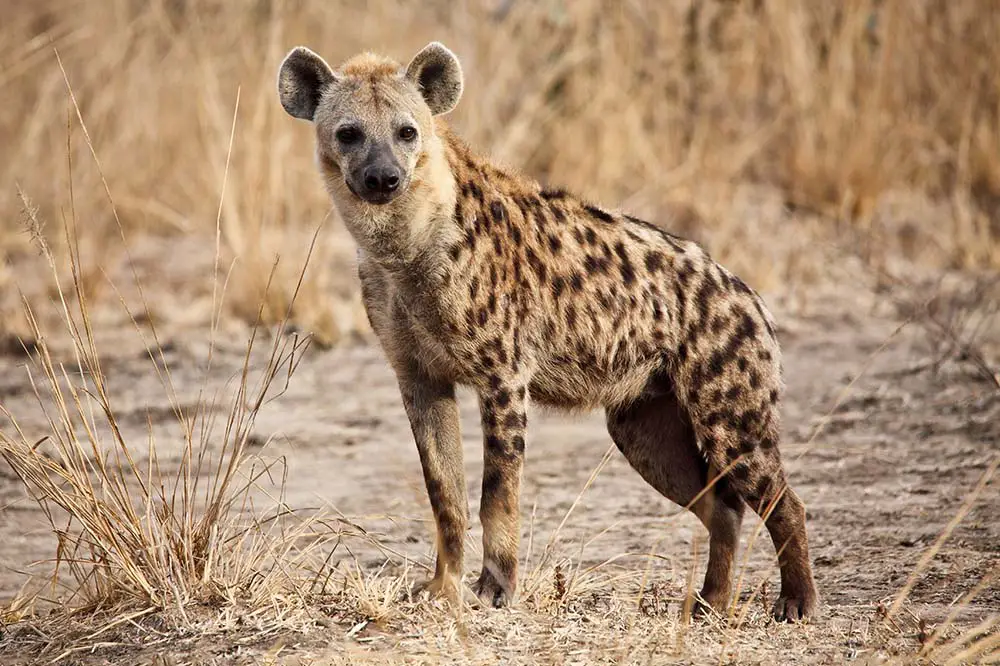
These animals are found throughout much of sub-Saharan Africa with their range overlapping slightly with that of the brown hyena, who are found on the southern tip of Africa and are part of the same subfamily, Hyaeninae. Also known as the strandwolf, these animals are smaller than their spotted cousins weighing between 34 to 72 kg ( 75 to 160 lb), which is slightly larger than a male leopard (17 to 65 kg / 37 to 143 lb). Although unique, they are not too dissimilar in appearance to the spotted hyena; they exhibit the same elongated forelimbs and large heads with pointy ears. Their distinguishing feature is the long brown hair on their back, which can reach 30 cm (11.8 in) in length and turns lighter in colour towards the nape. Brown hyenas are highly opportunistic and will scavenge carrion in addition to hunting smaller mammals and birds.
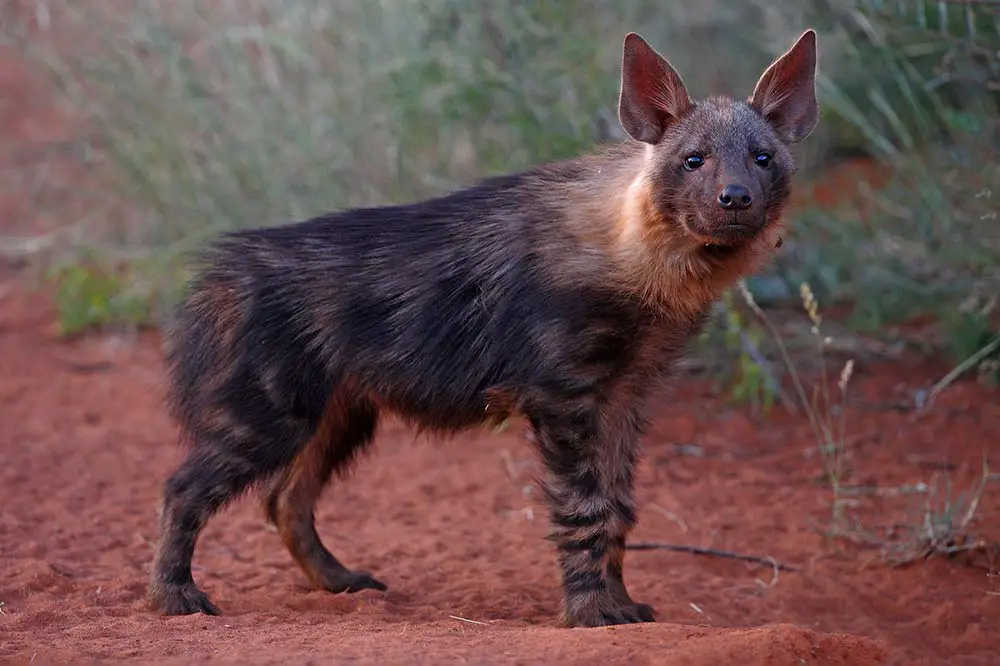
The remaining and smallest member of the Hyaeninae subfamily, the striped hyena weighs between 25 to 45 kg (55 to 99 lb) with males being slightly larger than females. They are generally thought of as solitary and scavenge on their own but recent research has shown that they congregate in groups of up to 7 where food or water is plentiful. They have a surprisingly large range being found as far east as Pakistan and India, through the Middle East and into Northern and East Africa, where their range intersects with the smallest and most distant hyena, the aardwolf who is found in East and Southern Africa.
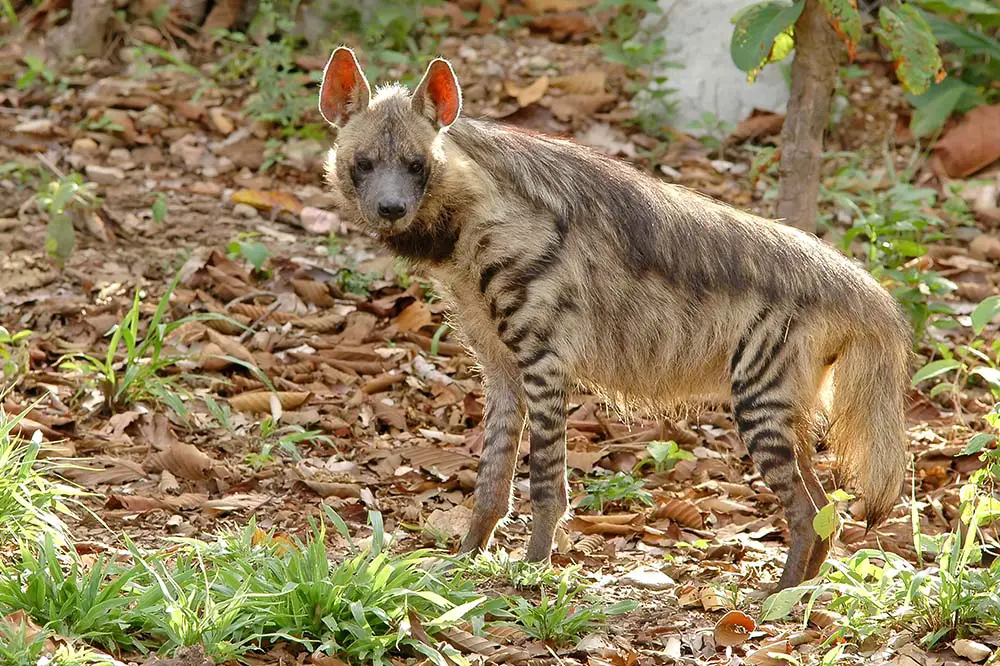
These miniature hyenas are a similar size to a serval, weighing just 8 to 14 kg (18 to 31 lb). They are also known as the “termite-eating hyena” with specific types of termites making up their entire diet. Due to this consumption, they play an important role in the ecosystems in which they abide, limiting the spread of termite colonies and the wood damage that they cause.
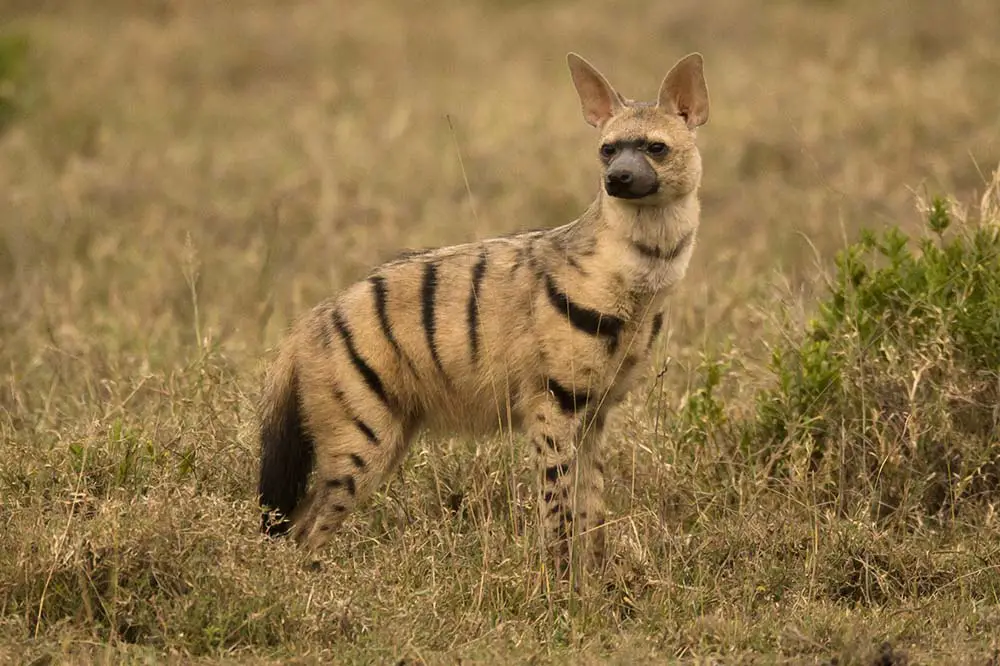
Viverridae | Civets & Genets
If you were to argue that one animal looked more similar to cats than the fossa, it would likely be the common genet. They are part of Viverridae whose members are split into two subfamilies containing genets and civets. The common genet is one of the smallest animals on this list weighing just 1 to 3 kg (2.2 to 6.6 lb). Like many cats, they are solitary, nocturnal and excellent climbers, hunting small mammals, reptiles and birds along with a selection of insects. With their arboreal skills, these animals favour forests and are also found in grassland.
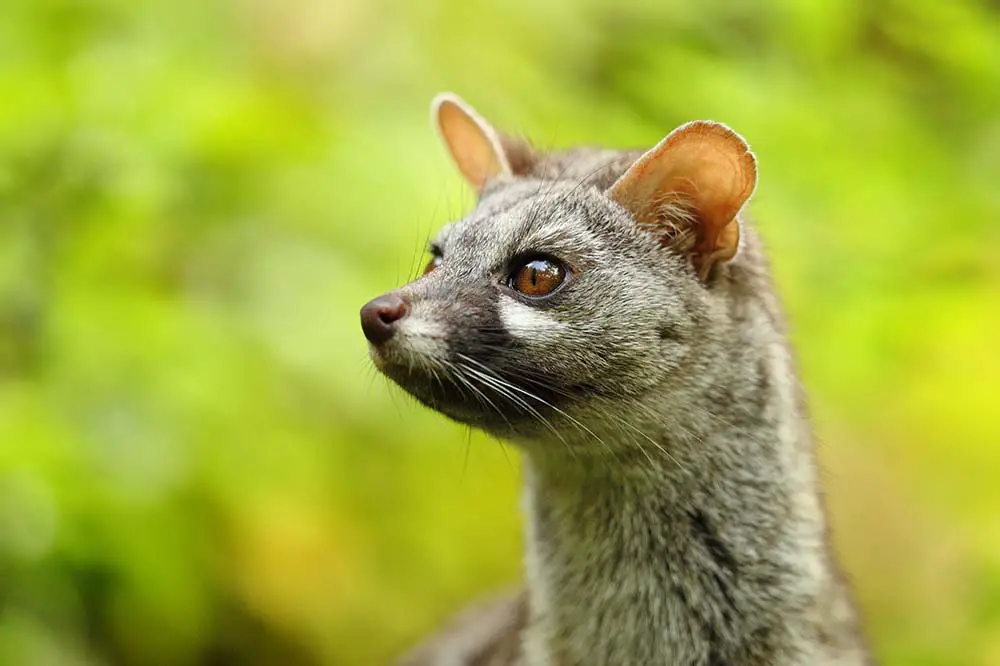
This species is generally found in Africa but has been introduced to Europe with its population extending as far north as France. Found at the southern end of this range, in Sub Saharan Africa is the African civet. Not too dissimilar visually but significantly larger, these animals are around the same size as an aardwolf at 12 to 15 kg (26.5 to 33 lb). They have a short mane running along the spine, which amongst other reasons is used to make themselves look larger when threatened. They are easily distinguished by the solid black mask around their eyes and muzzle along with a unique fur pattern, exhibiting large spots on the back half of its body. Gestation is around 65 days and litters usually average between 2-3 young. The African civet is one of 6 civets found in the Viverrinae subfamily.
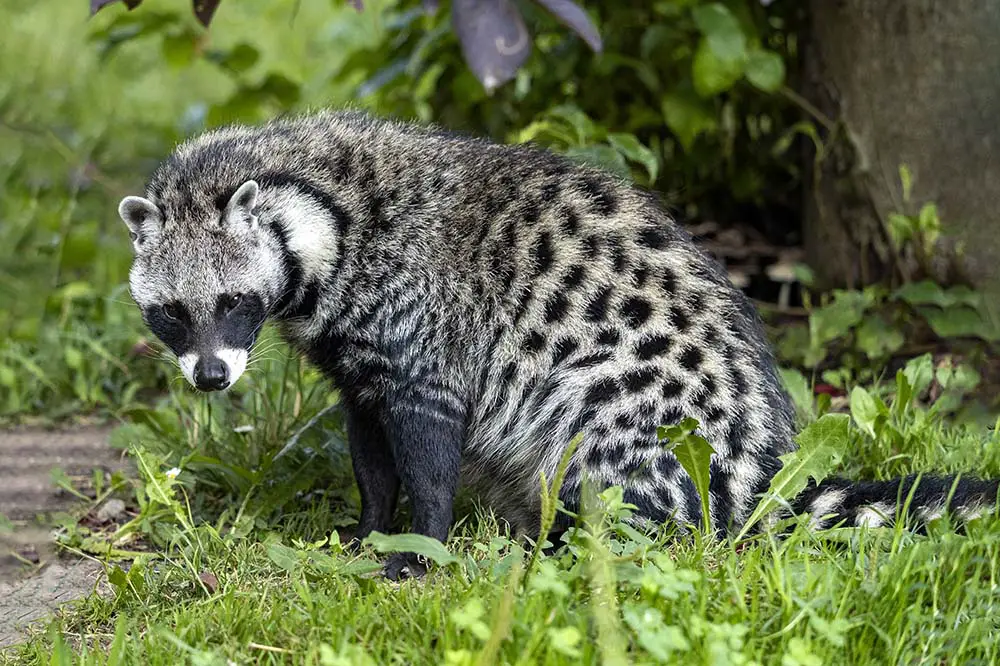
There are two other subfamilies within Viverridae that between them contain 11 species of palm civet. The Asian palm civet is found throughout Southeast Asia and as far west as India. These viverrids are a little larger than the common genet ranging from 1.3 to 5 kg (2.9 to 11 lbs) in weight. They are excellent climbers and are found mostly in forested areas, both temperate and tropical. They are thought of as frugivores, with fruit making up the majority of their diet and are also coffee bean connoisseurs, choosing to consume only the ripest and most palatable coffee beans which, once passed, are used in a fascinating process to create coffee.
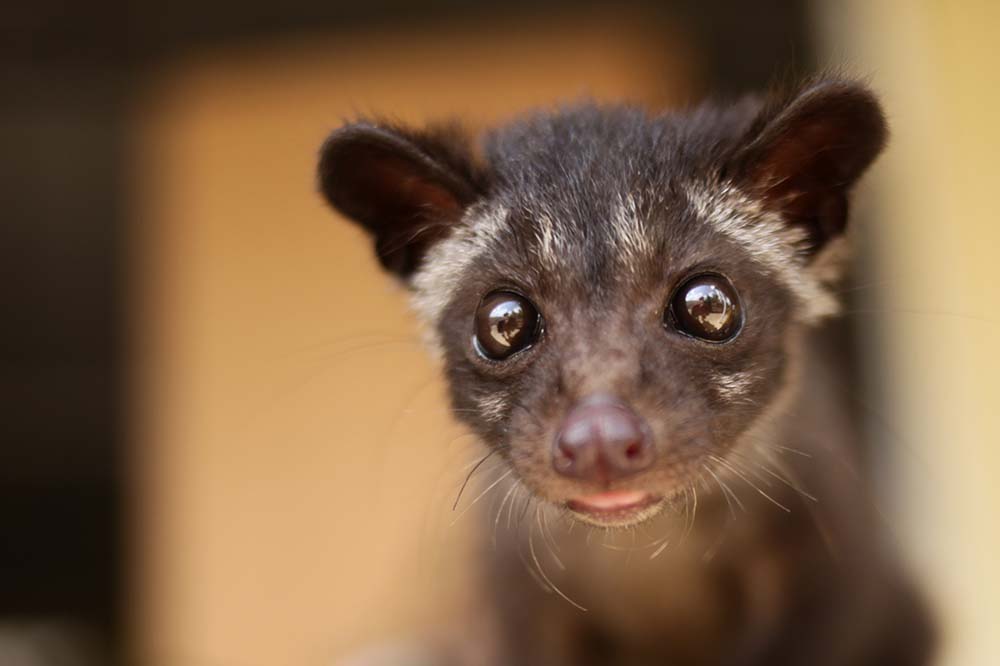
Nandiniidae | African palm civet
The last species of palm civet that we’ll discuss is from a completely separate family, Nandiniidae, which is the most basal of all families within Feliformia. At roughly the same size, African palm civets are quite similar to their Asian counterparts but do not exhibit the dark mask around their face.
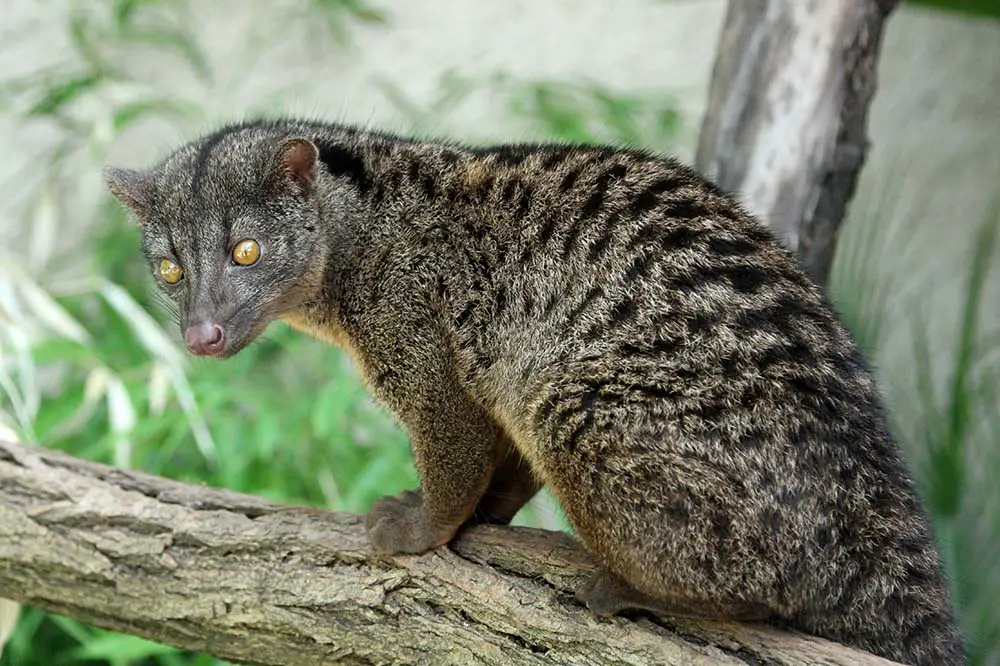
Prionodontidae | Asiatic linsangs
Last but most certainly not least are two species of Asiatic linsang who are the closest relatives to the Felidae family, containing all extant wild cats. There are two species, the banded linsang and the spotted linsang, both of which are found in south and southeast Asia on the western side of the Wallace line, which you can learn more about in this video, which covers all 8 Biogeographical Realms, their animals and their geography.
